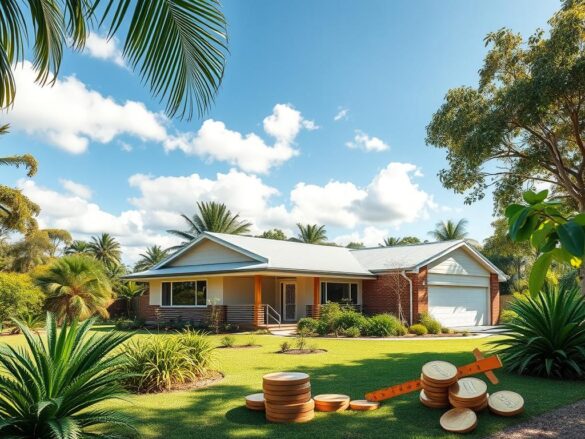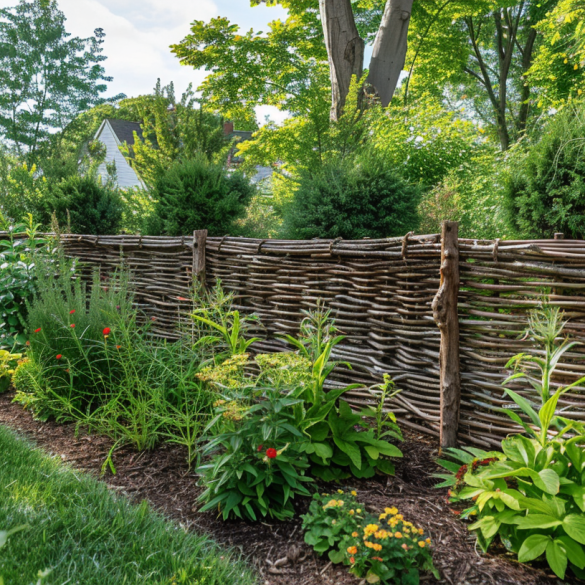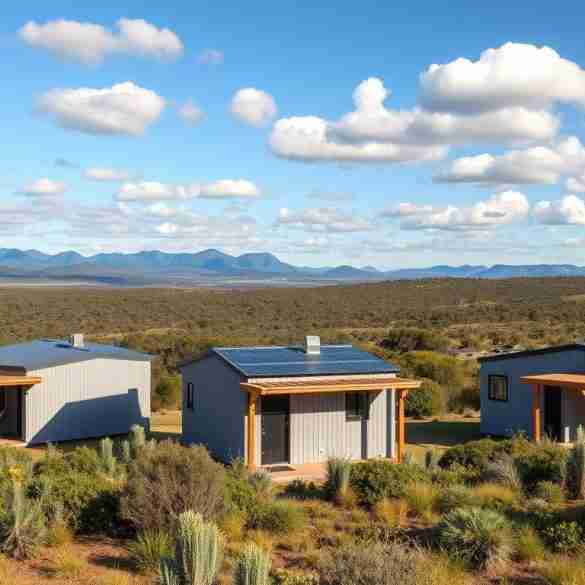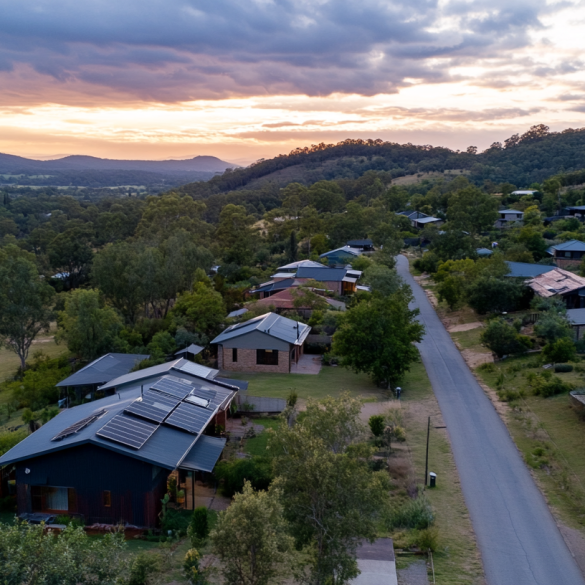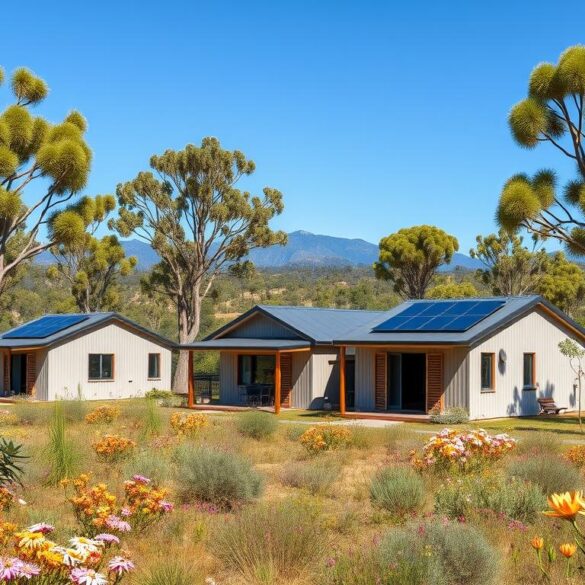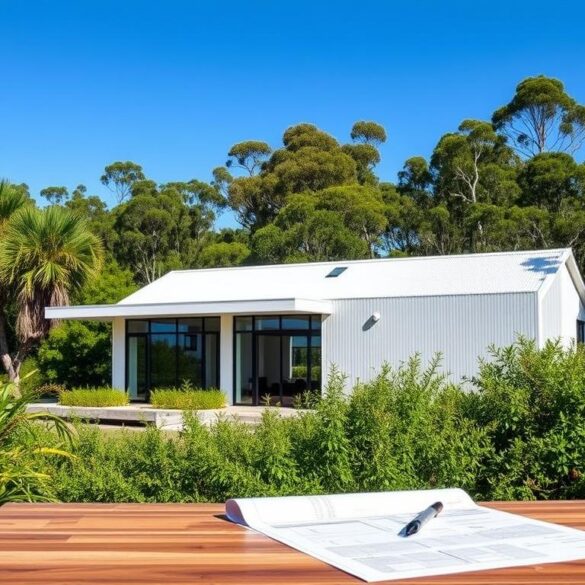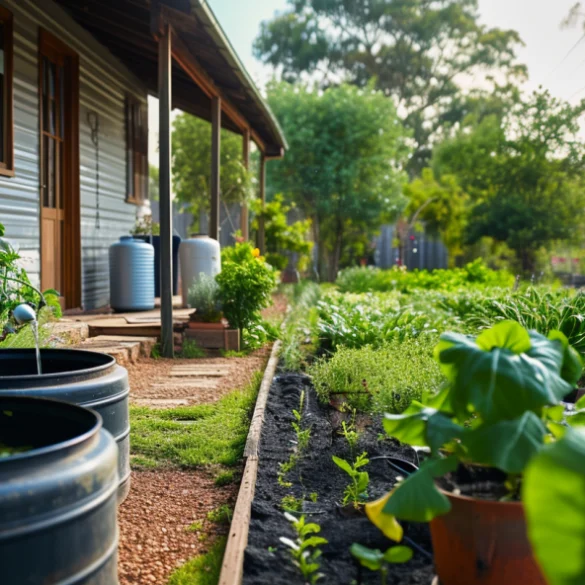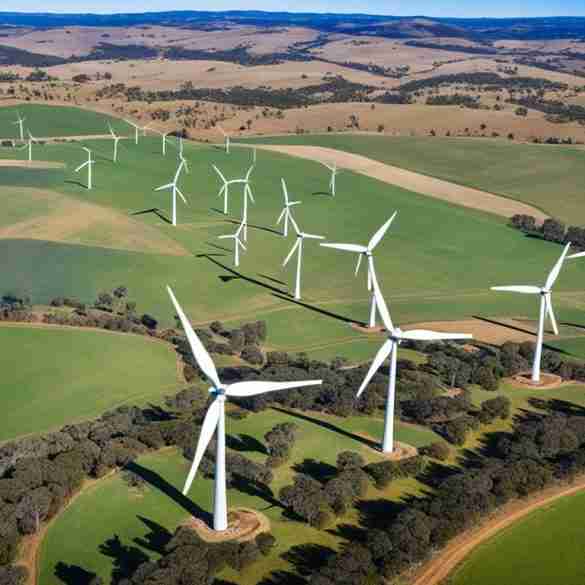Looking into kit homes in Queensland is exciting. Prices start at $120,000 for a basic kit and go up to $253,000 for a complete home. Many things affect the cost, like the materials, labor, land, and how customized it is.
Sheds n Homes is a top choice for steel kit homes in Queensland. They use TRUECORE® Steel by BlueScope Steel. This meets Australian building standards and lasts well in Queensland’s weather.
Labor costs are also important. Building yourself might save money, but it’s a big job. It needs planning and can have hidden costs. Or, you can hire a builder for their expertise and help.
Key Takeaways
- Kit home prices in Queensland range from $120,000 for a basic kit to $253,000 for a fully erected home.
- Material quality and construction methods, such as the use of TRUECORE® Steel, impact the overall cost.
- Labor costs can vary significantly, with owner-building offering potential savings but requiring careful planning.
- Selecting the right builder can help navigate the construction process and ensure a successful project.
- Government grants, like the First Home Buyers Grant, can help reduce the financial burden of acquiring a kit home in Queensland.
Understanding Kit Homes in Queensland
Homebuyers in Queensland looking for a budget-friendly and quick housing option might like kit homes. These homes are built elsewhere and then put together at the site. This method is great for Queensland’s lifestyle and weather.
What are Kit Homes?
Kit homes are built in a factory and then moved to the site for assembly. They focus on quality, efficiency, and customization. This lets homeowners design their homes to fit their needs and tastes. In Queensland, there are many styles and sizes of kit homes, from small to large, for different family sizes and budgets.
Benefits of Choosing Kit Homes
- Faster Construction: Kit homes are built and put together quickly, often in just four weeks. This means homeowners can move in sooner.
- Potential Cost Savings: Building kit homes can save money compared to traditional homes. This makes them a more affordable choice in Queensland.
- Energy Efficiency: Kit homes are made to save energy. This helps lower utility bills and is better for the environment.
- Customization: Homeowners can pick from many options like layout, size, and finishes. This lets them create a home that shows their style and needs.
Kit homes are becoming more popular in Queensland. They offer a smart and affordable way for homebuyers to get a quality, green, and personalized home.
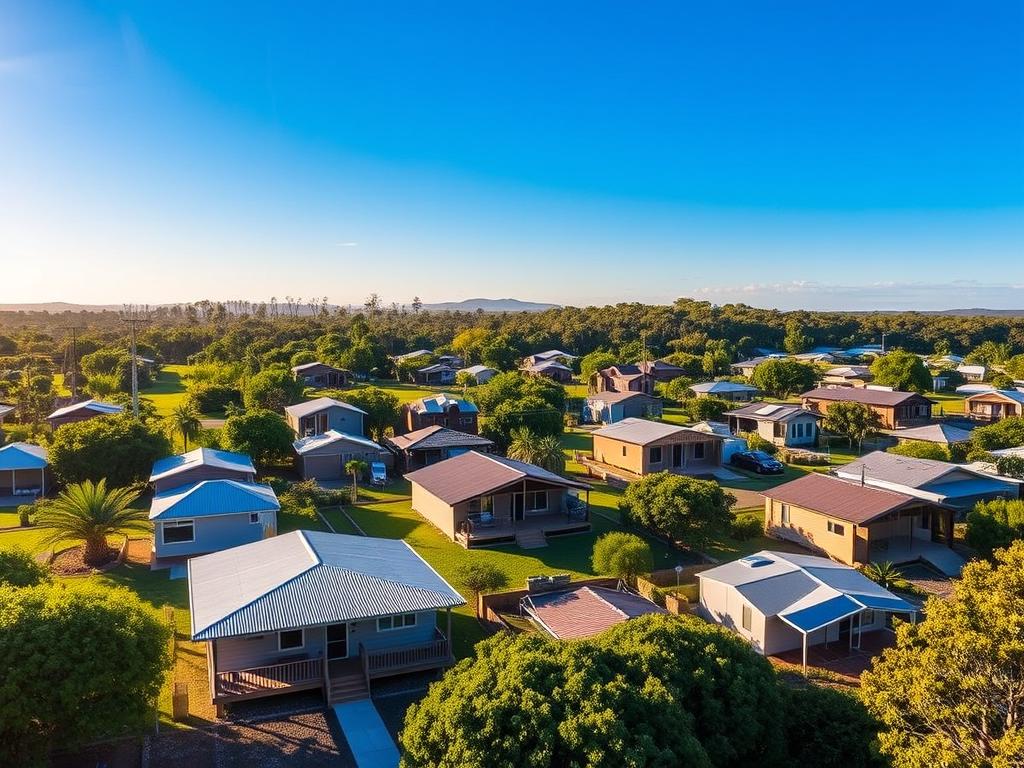
Key Factors Affecting Kit Home Costs
Building a Queensland kit home involves several important factors. These include the materials used and labor costs in the area. Knowing these can help homeowners make smart choices.
Material Quality and Type
The materials chosen for a kit home greatly affect the cost. Queensland custom kit home builders offer various options. From basic materials to high-end finishes, the choice is yours.
For example, a basic single-storey kit home starts at $75,000. A double-storey home with premium finishes can cost between $100,000 and $200,000. Also, Queensland kit home transportation costs can add $750 per 100km to the total cost.
Labor Costs in Queensland
Labor costs in Queensland also play a big role. The state’s construction industry has faced labor shortages. This has led to higher wages and longer construction times.
Some homeowners choose to build the home themselves. This way, they can manage the construction process. But, it also means they have to handle trade availability, time, and costs themselves.
| Kit Home Cost Factors | Average Price Range |
|---|---|
| Single-storey kit home | Around $75,000 and up |
| Double-storey kit home | $100,000 to $200,000 |
| Country kit home | $30,000 to $70,000 |
| Custom kit home | $80 to $150 per square meter |
| Steel kit home | $100,000 to $200,000 |
| Timber kit home | From $60,000 |
Understanding these factors helps Queensland homeowners plan better. They can ensure they have a realistic budget for their kit home project.
Land Costs and Location Impact
The place where you put your kit home in Queensland can change the cost a lot. Urban spots usually cost more than rural ones. This is because of higher land prices, more labor costs, and tighter rules in cities. But, rural Queensland might have cheaper land, which could make your kit home project cheaper.
Urban vs. Rural Pricing
The price of a kit home in Queensland can differ a lot between city and country. The average cost to build a home in Queensland is about $320,000. The price per square meter is around $1,393 on average. But, these numbers can change a lot based on where you are and the site conditions.
For instance, a 3-bedroom house in Brisbane without land would cost about $350,000. But, in rural Queensland, the cost per square meter for a low-set brick home in 2022 is around $1,800/m2. In cities, it’s $2,500/m2 for a high-set brick home.
Zoning Regulations and Permits
Zoning rules and permits can also affect the cost of kit home installations in Queensland. Depending on where you are, there might be special rules about what you can build, how big your lot can be, or what permits you need. These rules can make your project more expensive and take longer, so think about them when planning your kit home.
Also, Queensland’s weather, like cyclones in some areas, might need extra work to make your home safe. This can also raise the cost of building your kit home.
| Location | Estimated Building Cost per Square Meter |
|---|---|
| Brisbane (urban) | $2,000/m2 (low-set brick), $2,500/m2 (high-set brick) |
| Rural Queensland | $1,800/m2 (timber frame) |
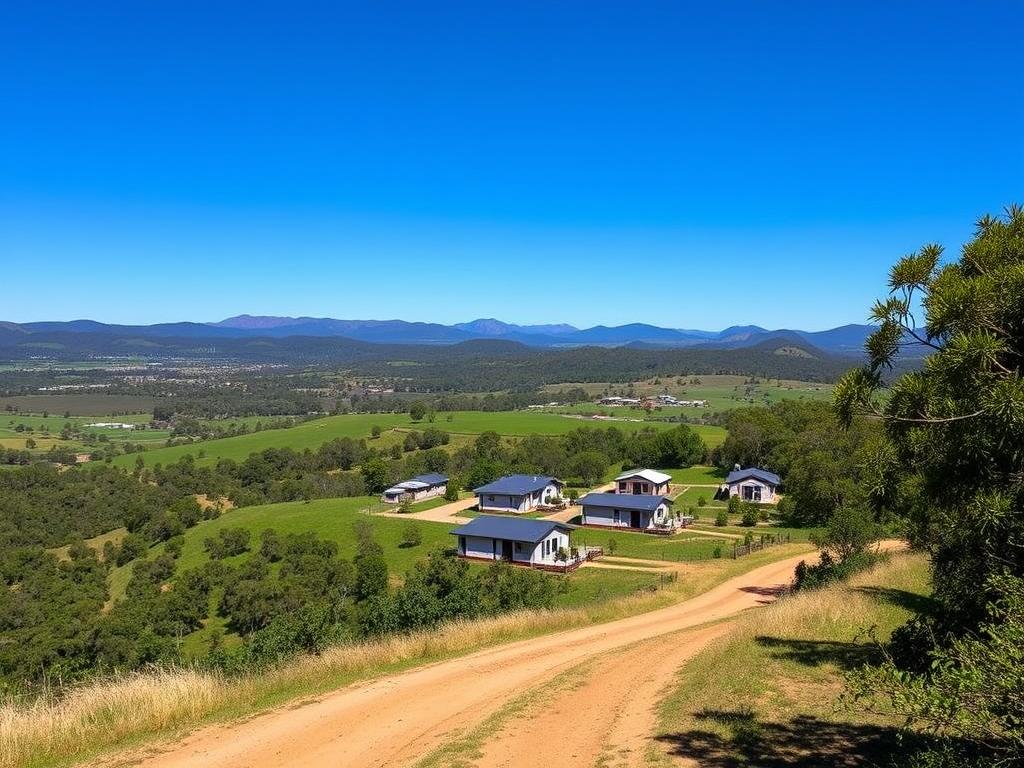
Design and Customization Choices
Homeowners in Queensland can pick from standard or custom kit home designs. Standard homes have pre-designed floor plans, making building easier and cheaper. These homes often come with basic appliances and fixtures, making the project simpler.
Custom designs let you choose the layout, materials, and finishes you like. This personal touch can increase the cost, especially with high-end features. But, for a unique home, it might be worth the extra cost.
Types of Finishing Options
The finishing choices for a Queensland kit home affect the cost. You can choose from affordable to luxurious materials. Some providers offer packages with appliances and fittings, while others need extra purchases.
| Kit Home Design | Size (m²) |
|---|---|
| Ivy Cottage | 131 |
| The Prestige | 415 |
| The Retreat | 53 & 65 |
| The Cottage | 56 |
| The Weekender | 89 |
By thinking about design, customization, and finishing, homeowners can find a kit home that fits their budget and style. Talking to reputable providers, like those in Sustainable Home Magazine, can help make the right choice.
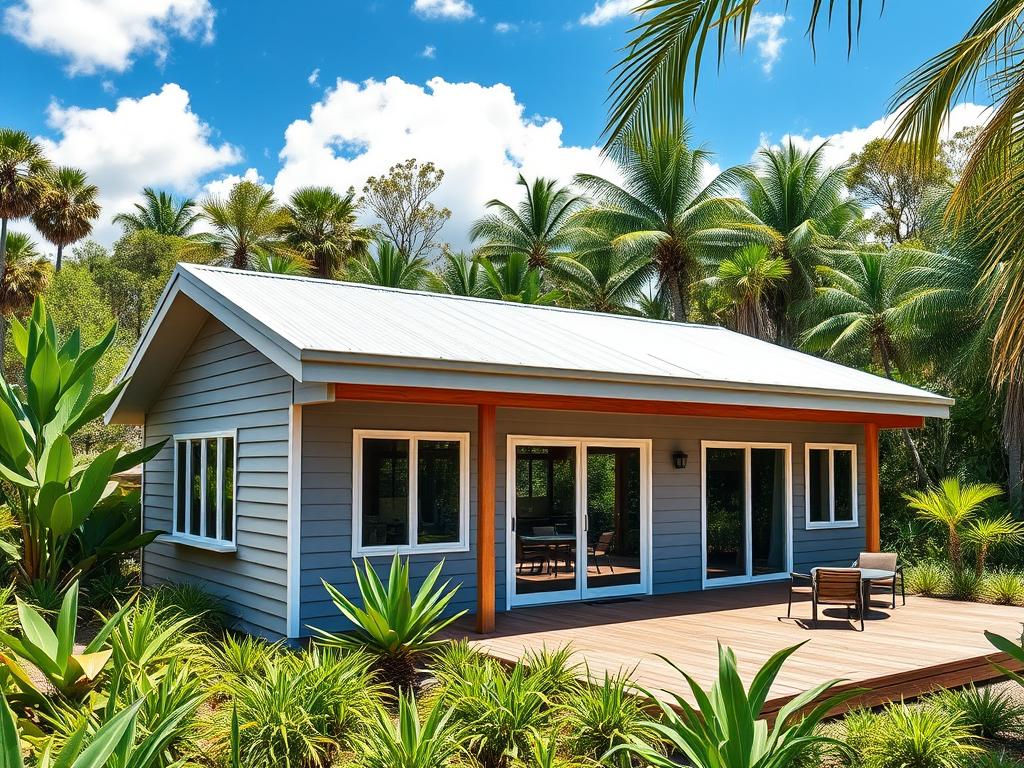
Environmental Considerations
Building your dream home in Queensland means thinking about sustainability. Queensland’s climate is diverse, so homes need to be weather-ready. Using sustainable materials and energy-saving designs can save money in the long run.
Climate and Weather Impacts
Queensland’s weather changes a lot, from tropical to temperate. Kit homes made for Queensland’s climate help your home stay energy-efficient.
Sustainable Materials and Practices
There are many green building options for homes in Queensland. From recycled insulation to energy-saving windows, these choices help the planet. They make your home more sustainable for the future.
| Sustainable Material | Key Features | Environmental Benefits |
|---|---|---|
| Timber Framing | Absorbs and stores carbon dioxide | Reduces carbon emissions by up to 23 tonnes per home |
| Earthwool Insulation | Made from 80% recycled glass bottles | Highly energy-efficient, reducing overall energy usage |
| Weathertex Timber Cladding | Termite-resistant, with a 25-year guarantee | Better than zero carbon footprint, enhancing sustainability |
Choosing sustainable materials and energy-saving designs makes your home green. It also saves you money on energy bills in the long run.
Financing Options for Kit Homes
Getting a loan for Queensland kit homes can be tricky. Lenders see these homes differently than regular houses. But, knowing your budget and government help can make it easier.
Understanding Your Budget
Start by making a budget for your kit home. Include extra money for surprises. Kit home makers often want all money up front, which is different from regular loans.
Lenders might be hesitant to give loans for kit homes. This is because there’s a risk. If something goes wrong, you might lose your land as security.
Government Grants and Incentives for Kit Homes
The Queensland government has grants and incentives for kit homes. These can lower your costs. It’s key to look into all options to get the most help.
The QBCC’s Home Warranty Scheme covers issues with licensed contractors. But, it doesn’t help if you’re building it yourself.
Knowing your budget and looking into loans and government help can help you get your kit home in Queensland.
Long-term Costs of Kit Homes
When looking at Queensland kit homes, think about costs beyond the first price. Focus on maintenance and energy use.
Maintenance Expenses You Should Consider
Maintenance costs for Queensland kit homes depend on material and build quality. Better materials mean less upkeep over time. Still, plan for regular checks and repairs.
Energy Efficiency and Utility Costs
The Queensland climate affects your home’s energy costs. Energy-efficient prefab homes can save on bills. They use better insulation and smart tech.
Research your kit home’s maintenance and energy use. This helps predict costs and ensures a comfortable, affordable home for years.
“Steel frame homes are considered superior for adverse climatic conditions in Queensland, such as cyclones, and can be engineered to comply with all wind ratings, including high cyclonic areas like Far North QLD.”
Sustainable Home Magazine says steel kit homes are great for Queensland’s climate. They use special steel and roofs to last longer against the weather.
| Metric | Average Cost |
|---|---|
| Cost per square metre | $400-$600 |
| Three-bedroom kit home (basic connections) | $53,400 |
| Modular home (basic model) | $60,000-$200,000 |
Knowing the long-term costs of Queensland kit homes helps you choose wisely. Choose energy-saving and low-maintenance options for big savings over time.
Common Myths About Kit Homes
There are many wrong ideas about Queensland kit homes. People think they are not as good as traditional homes. But, the truth is different.
Misconceptions About Durability
Many believe kit homes are not as strong as traditional homes. But, well-made kit homes in Queensland can last as long or longer. The quality of materials and how they are built matter a lot.
Cost Comparisons with Traditional Homes
Some think kit homes are always cheaper than traditional homes. But, the cost of a kit home project includes more than just the kit. Land prep, assembly, and finishing costs add up. So, the price difference might not be as big as you think.
| Metric | Prefab Kit Homes | Traditional Homes |
|---|---|---|
| Average Cost per Square Meter | $1,500 – $2,500 | $2,000 – $3,500 |
| Build Time | 4-6 weeks for kit prep, 4-8 weeks to assemble | 6-12 months to build on-site |
| Customization Options | Moderate to High | High |
| Financing Options | Up to 60% bank financing available | Widely accepted by banks |
This table shows kit homes might cost less upfront. But, the total cost and options for customizing should be thought about. This is when comparing to traditional homes in Queensland.
“Modular homes can be finished and ready in four weeks after they arrive. This is much faster than building on-site.”
Knowing the truth about kit homes helps homeowners in Queensland make better choices. This is for their home-building journey.
Making an Informed Decision
Building your dream kit home in Queensland needs careful thought. You must research local builders and suppliers well. This ensures you work with trusted and skilled professionals. Also, visiting kit home projects in your area helps understand quality and design choices.
Researching Local Builders and Suppliers
Look into the options in your local Queensland market. Companies like PAAL Kit Homes and iBuild Building Solutions are top choices. They offer many designs and reliable delivery. Compare their work, customer feedback, and skills to pick the right one for you.
Planning Your Kit Home Project
Good planning is essential for a successful kit home build in Queensland. Think about possible delays or supply chain problems. Plan realistic timelines to handle these issues. Talk to designers, engineers, and local authorities to follow all rules and standards.
By planning well, you can avoid problems and enjoy building your new home smoothly.

